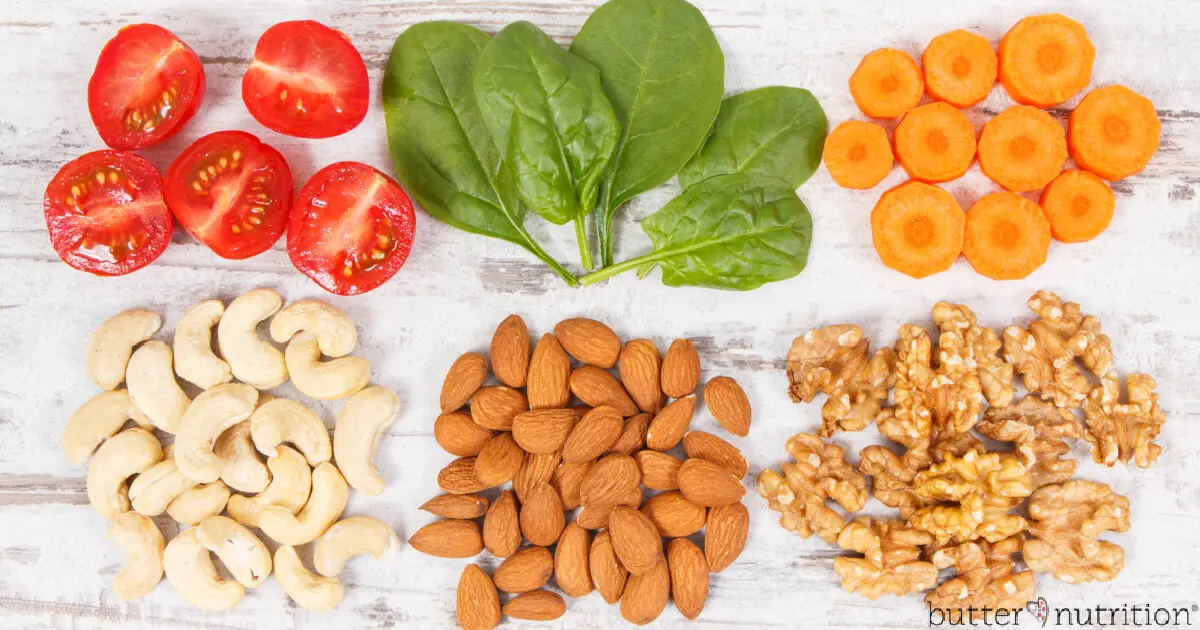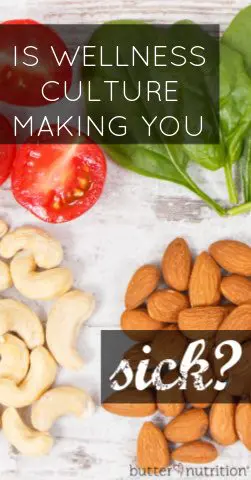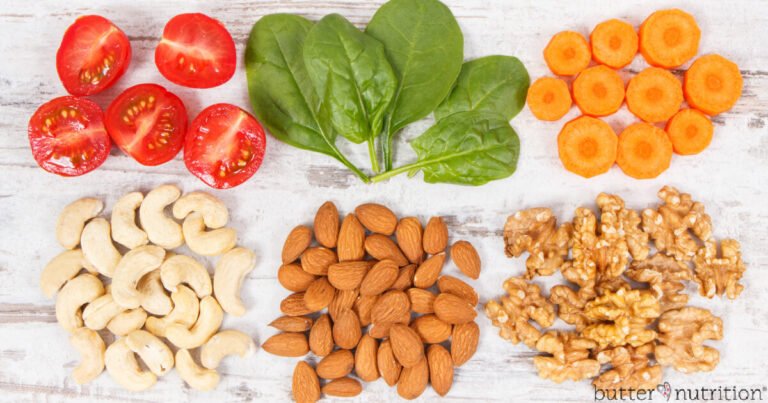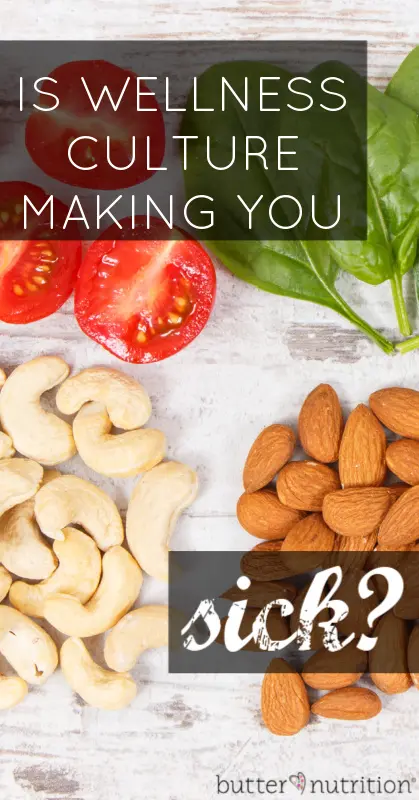 Wellness culture has run rampant in recent years, pushing healthy habits to extremes and making people sick.
Wellness culture has run rampant in recent years, pushing healthy habits to extremes and making people sick.
If some health food is good, more must be better, right? In the context of the following three areas, too much of a good thing can actually be very bad for your health.
1. Excess nutrients
The main nutrients that cause problems in excess are vitamin A, copper and iron. Often a customer has a problem with more than one of these.
- Excess vitamin A — Getting too much vitamin A from eating rich foods like dairy, butter, and eggs for decades along with taking multivitamins, Rx drugs like Accutane or Tretinoin, and eating liver regularly can push your levels up at the limit.
The Livertox database covering clinical and research information on drug-induced liver damage confirms the toxicity: “Vitamin A in high doses is a direct toxin. Excess vitamin A is stored in stellate cells in the liver and accumulation can lead to activation and their hypertrophy, excessive collagen production, fibrosis, and liver damage. Toxicity is dose-related and reproducible in animal models.” [1]
With my one-on-one counseling clients, we take advantage of lab blood tests (you can live anywhere in the US except for a few states) to check vitamin A levels.
Read more about vitamin A toxicity.
- Copper overload — Wellness culture tends to encourage foods high in copper, such as dark chocolate, nuts/seeds, avocados, shellfish, liver, and multivitamins. This can easily tip the copper scales in the wrong direction, especially for your liver and mental health.
Copper overload can occur for a number of reasons, a strong influence being the competitive relationship between copper and zinc. When zinc is depleted by stress, nutritional deficiency, or malabsorption, copper can increase.
Read more about copper overload.
- Iron overload — While you’ve probably heard of anemia or low iron levels, discussion of milder forms of iron overload is less common. Excess iron acts as a rusting agent in your body and can accumulate in tissues, particularly in the liver, pancreas, heart, joints and brain. This accelerates the aging process and puts you at a much higher risk for vascular disease, cancer and reduced life expectancy.
Iron overload is also linked to liver disease, cardiovascular disease, gout, infertility, hypothyroidism and a very long list of others essential to know your iron status. [2]
This way you can be better informed to make decisions about taking iron supplements.
Read more about iron overload.
2. Plant toxin overload
Most plants contain various plant toxins, but some have ones that are more problematic when consumed in excess.
A large part of the problem with these foods comes from eating them out of season. You see, some plants contain plant toxins that create more work for the immune and detoxification system. While your body can handle mild exposure for several weeks while a plant like a tomato is in season, eating them regularly starts to put more stress on your system over time (constantly giving your liver more work to do).
The foods that really get people here are overeating foods high in oxalic acid and nightshade vegetables.
- Evening Primrose Vegetables:
Nightshades are a member of the Solanaceae plant family with strong links to anti-inflammatory action. They contain problematic plant toxins, compounds such as calcitriol, solanine, nicotine and capsaicin that have been linked to chronic pain, arthritis [4] and increase intestinal permeability [3].
The evening primrose family includes hot peppers, tomatoes, ashwagandha (popular for adrenal support), bell peppers (also known as sweet peppers), cape gooseberry, eggplant, goji berries (also called wolfberry), paprika, potatoes (including potato starch that found in many gluten-free foods) and tobacco.
Because nightshades play such a central role in typical American diet foods like pizza, pasta, salsa, and Mexican food, it can be very difficult to identify a problem if you eat these foods regularly.
Read more about nightshades and inflammation.
- Foods high in oxalates:
Oxalates (or oxalic acid) are a naturally occurring compound found in plant foods, but can also be synthesized by the body (via the glyoxylate pathway). They are usually associated with chronic pain and kidney stones.
High-oxalate foods that are commonly over-consumed in the wellness culture include:
- Spinach
- almonds
- Cocoa (dark chocolate)
- Rhubarb
While oxalate testing is available (OAT test), perhaps the best way to see if these plant toxins are affecting you is to eat less of them and more foods low in plant toxins and see if you feel better.
3. Overfilling
With more than 90,000 nutritional supplements and vitamins on the market, how can you be lucky enough to choose the right one for you? It’s a dying statistical game you play every time you go to the supplement store. In the end, it just costs you a load of money along with adverse symptoms that you may get from these very expensive supplements.
If every day, 365 days a year (maybe multiple times a day) you’re taking supplements that don’t work with your body chemistry and just give your liver more work to doHat has a huge impact on your health. From affecting your digestion to overtaxing your liver and maybe even giving you nutrients you don’t need because you already have an excess (back to #1 excess nutrients), supplements are often the problem, not the solution .
Some vitamins have a negative impact on other nutrient levels in your body because the nutrients work together (hint: vitamin D is big here).
According to a 2013 article in Annals of Internal Medicinethe supplement debate needs to end:
In conclusion, beta-carotene, vitamin E, and possibly high doses of vitamin A supplements are harmful. Other antioxidants, folic acid and B vitamins, as well as multivitamin and mineral supplements are ineffective in preventing mortality or morbidity from major chronic diseases. The available evidence does not exclude small benefits or harms or large benefits or harms in a small subgroup of the population, we believe the case is closed—supplementing the diet of adults with (more) minerals or vitamins is not clear benefit and may even be harmful. These vitamins should not be used to prevent chronic diseases. [5]
ONE 2007 study in JAMA had similar findings:
“Treatment with beta-carotene, vitamin A, and vitamin E may increase mortality. The potential roles of vitamin C and selenium in mortality need further study.” [6]
Remember, less supplements = more. Find out what your body needs, then spend the extra supplement money you save on your groceries (not some supplement company’s profit margin).
Packed food
If you got anything valuable from this article, it’s that you should pay attention and listen to your body, not the wellness culture. Overeating these particular foods and nutrients adds stress to your body and increases the workload of your liver, which can have big consequences for your energy levels, mood, digestion, and weight.
Blood nutrient labs for (copper, zinc, vitamin A and iron) are available to my clients in the US (except NY, NJ and RI) and hair tissue mineral analysis is available to clients worldwide. You can add these tests to any visit or package to check your body and discover what is standing in the way of you and optimal health.
Is wellness culture working for you? Please share in the comments!
PIN IT:

Bibliographical references:
- https://www.ncbi.nlm.nih.gov/books/NBK548165/
- https://chriskresser.com/iron-behaving-badly-the-role-of-iron-overload-in-metabolic-disease/
- Jensen-Jarolim E et al. “Hot spices affect the permeability of human intestinal epithelial monolayers”. J Nutr. 1998 Mar, 128(3):577-81.
- Childers NF, and Margoles MS “An Apparent Relation of Nightshades (Solanaceae) to Arthritis” Journal of Neurological and Orthopedic Medical Surgery (1993) 12:227-231
- https://annals.org/aim/fullarticle/1789253/enough-enough-stop-wasting-money-vitamin-mineral-supplements
- https://jamanetwork.com/journals/jama/article-abstract/205797

